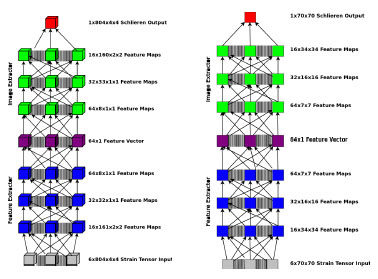A Deep Learning Approach to Identifying Shock Locations in Turbulent Combustion Tensor Fields
July 8th, 2017
Categories: Applications, Visual Analytics, Visual Informatics, Deep Learning

Authors
Monfort, M., Luciani, T., Komperda, J., Ziebart, B., Mashayek, F., Marai, G.E.About
We introduce a deep learning approach for the identification of shock locations in large-scale tensor field datasets. Such datasets are typically generated by turbulent combustion simulations. In this proof of concept approach, we use deep learning to learn mappings from strain tensors to Schlieren images which serve as labels. The use of neural networks allows for the Schlieren values to be approximated more efficiently than calculating the values from the density gradient. In addition, we show that this approach can be used to predict the Schlieren values for both two-dimensional and three-dimensional tensor fields, potentially allowing for anomaly detection in tensor flows. Results on two shock example datasets show that this approach can assist in the extraction of features from reacting flow tensor fields.
Support:
NSF CAREER IIS-1541277
Resources
URL
Citation
Monfort, M., Luciani, T., Komperda, J., Ziebart, B., Mashayek, F., Marai, G.E., A Deep Learning Approach to Identifying Shock Locations in Turbulent Combustion Tensor Fields, Modelling, Processing and Visualization of Anisotropy, Mathematics and Visualization Series, Springer, Cham, pp. pp 375-392, I. Hotz, T. Schultz, E. Ozarslan (eds), July 8th, 2017. https://link.springer.com/chapter/10.1007/978-3-319-61358-1_16